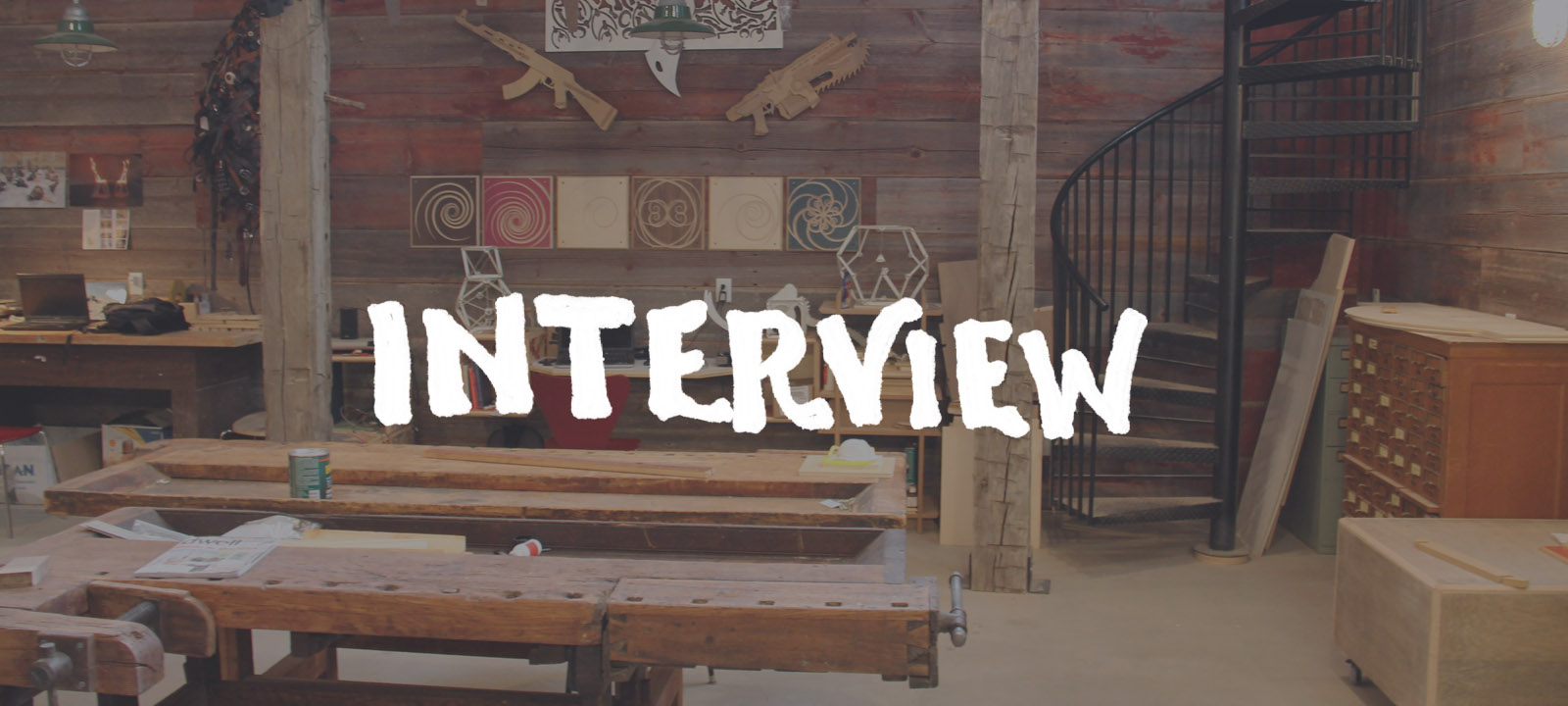Today’s interview is with Stock MFG Co.’s CEO, Jim Snediker, and the management team Tim Tierney, Areill Ives, Mike Morarity and Jason Morgan.
Can you give 50 BUILT readers some background on yourselves and the events that lead up to starting Stock MFG?
We’ve been working on the concept of Stock Mfg. Co. for a little over a year now and we’ve come a long way from where we started. Since the beginning, we’ve wanted to create a high-end, domestically manufactured clothing line that was entirely vertical. Having worked in nearly every facet of the apparel industry (design, development, sourcing, production, retail), we saw the inefficiencies between each stage and knew there was a much better way. I was working on Vagrant Nobility, our menswear label, with Mike and managing the production of Stormy Kromer’s shirt program at Areill’s family-owned factory on the west side of Chicago. Each day, Areill and I would discuss the market- things we liked, but mostly things we didn’t. We decided to form Stock Mfg. Co. as a way to reinvent the apparel game and reinvigorate domestic manufacturing. The name “Stock” is actually inspired by The Union Stock Yards that fueled Chicago’s economy and provided millions of local jobs for over a hundred years.
In the beginning, we had a lot of crazy ideas- one included setting the factory up like a brewery and offering tours. We wanted to create a business model with maximum transparency between the manufacturers and customers, and at the same time educate people on what goes into the clothes they wear. We realized we were getting ahead of ourselves and decided to create the Stock menswear line first. We drew inspiration from the history of Chicago and worked with classic design conventions mixed with tailored fits and high quality Japanese fabrics. Near the completion of the menswear line, we met Jim and Jason who had been working on their ecommerce site, Left of Trend. They were in the process of reinventing their business, and had been looking for a local manufacturer to partner with. We shared some ideas over drinks and the result was our current business model of Stock Mfg. Co. and & Stock. It worked out perfectly because our interests and personal styles were all very different, yet complementary.
How is Stock MFG set up as far as locations and employees are concerned?
We now have two offices; a headquarters downtown on Michigan Ave. where Jim and Jason are stationed to head up business development, sales and marketing efforts. Our second office is at the factory in West Garfield Park. The factory is a 45 year old family owned business that specializes in tailored military garments. Our biggest contracts are with the Air Force, US Army, and Marlow White in addition to various fashion labels. Our number of operators fluctuates depending on how busy we are; when it’s slow, we have about 8-10 operators- when we’re slammed we can have as many as 30 operators working. Because our factory is set up for tailored military garments, we have the best machinery available due to the fact that every piece needs to meet mil-spec standards before we ship it out. It’s great, because we are able to carry that level of quality into the fashion brands we manufacture.
What kind of impact are you hoping to make with Stock MFG?
The first, and most obvious one, is to provide high-quality, on-trend clothing to our customers, at affordable prices. Everything we make will be done in the USA by fairly compensated and ethically treated workers, and will be crafted from the best fabrics and meet the most rigorous production standards. You’ll be able to buy a button down shirt of the same quality as something that would retail for $165 at a boutique for $85 on our site, and you’ll feel good about where it came from.
We are also looking to contribute to the “democratization” of the fashion industry. We’re aiming to eliminate the heavy up-front costs of getting a piece produced, while also assisting designers in two areas in which they often struggle: business sense and marketing skills.
We want the talent of a designer to win out, regardless of the amount of money behind them or who they know. If you are talented and driven, you can get a piece produced and get it out to a National audience. We believe that can be invaluable, and can open this industry up to an age of accessibility and innovation we have never seen.
Thirdly, and what we hope will be our lasting legacy, is creating jobs through the revitalization of Chicago’s manufacturing sector.
What has the reception been thus far to your collection from a retail, wholesale and designer perspective?
As for the products themselves, buzz thus far has been very encouraging. We premiered a select few items recently, and definitely exceeded our expectations for sales. We’re thrilled to get our full product offering out to the public, as well as to premiere the “& Stock” collaborations we have lined up – we’re working with some extremely talented designers.
We aren’t really pursuing wholesale accounts at this point, but are in conversations with one major retailer that reached out to us. We are certainly open to wholesale as long as we can keep our price points congruent with what they will be on our site.
Our plan for wholesale is to take it on a case-by-case basis. We like the idea of being in a few stores around the country, just to make it easier for people to go and get their hands on our products. We are first and foremost a vertically integrated company, which is why we can offer great products at low prices.
As for the “& Stock” collaborations, finding the kind of talent that fits our aesthetic and price points is the toughest challenge, but we’ve had some good success with that already.
What kind of relationships are you building with fabric vendors & craftsman?
Most of the relationships we have with vendors and artists we’ve established while working in design and manufacturing and just being an active part of the industry. It’s actually a very close knit community once you meet the right people. For example, we rep the Japanese textile company Zentex in the Midwest and have met several designers that way. One of the great things about working in Chicago is that there’s a feeling of camaraderie, and everyone is willing to help out and elevate the community as a whole.
How does a designer go about working with Stock MFG? What is your criteria for choosing designers you feature in the Stock MFG Collection?
When we’re looking for new designers to work with, we focus on a few key questions, and expand from there: Do we like your item, and do we think it will sell? Are the designs you submit original? Are your items production-ready? Are you interested in gaining nation-wide exposure? Do you want to support American manufacturing?
We love working with people from all walks of life, with different stories to tell. And the dynamic nature of the talent pool really keeps us excited about future collaborations. We work with individuals with a variety of experience…from established designers who are looking to try something new or launch a ‘made in America’ line, to university students who are just beginning their path in the fashion industry. And what’s great is there’s a constantly regenerating source of creativity coming out of colleges and universities that specialize in art, fashion, and design.
I know a lot of designers out there are skeptical about the ‘work for hire’ business plan. How is the Stock MFG business plan different and how to you keep the work they submit from becoming ‘spec-work.’ Are they compensated for their work either way, or only if it’s chosen?
We are so fortunate to be in a position to work with the some of the most talented designers in America…those who showcase truly unique ideas and perspectives. Stock Mfg. Co.’s core values are centered around supporting entrepreneurial individuals, and fostering growth in the creative community. That support system starts with recognizing that many aspiring designers need help. Most don’t have an efficient manufacturing chain established, effective marketing and branding efforts in place, or a functional ecommerce platform that engages customers. So a big part of the value-add that Stock Mfg. Co. brings to the table – we align all of these elements for the designer.
Designers are only compensated when their designs successfully reach the minimum threshold of pre-orders by our customers. We don’t charge designers anything to be featured on the site, so whether they reach that minimum threshold or not, they’re getting great exposure.
The designers we work with have already created their sample, graded their patterns, etc – so we aren’t asking them to do any work for free. We are simply providing a platform for them to showcase their piece, which bears their own branding. If all goes well and the demand is there, they then get their piece manufactured and distributed at no cost to them, and make a nice chunk of money in the process.
Why is it so important for Stock MFG to market the fact that they are ‘American Made’ and why at this point in our culture is it so beneficial to be loud about the fact that one’s goods are Made in the USA?
For a variety of reasons I think it’s important for Stock Mfg. Co. to be vocal about our commitment to American manufacturing. Firstly, we are in a unique position, because we come from a ground-level perspective and we completely understand all of the components of creating a vertically-integrated clothing company, most of which are people. Our goal is to be honest and transparent in informing our customers about the industry, how it works, and why they should care. Second, it’s an issue of sustainability. Many people are concerned about the future of the U.S. economy, and self-sufficiency is the foundation of sustained prosperity. On a fundamental level, in order for our communities to prosper, people have to have jobs, and in order for these jobs to exist, there have to be companies willing to keep their labor in the states, as well as customers who care about where their products come from. Third, the manufacturing arm of our company has been doing it here, and doing it well, for over 40 years. We’re excited about the opportunity to offer products of this caliber directly to customers.
What does that message send to the consumer and do you foresee it influencing their decision when making a purchase?
Many of the vertically-integrated manufacturers in America offer relatively basic products, which is infinitely valuable. The difference is that we’ll be offering a whole variety of fashionable, high-quality products, from staples to more “risky” fashion-forward options. As the wealth disparity in America has increased, people have been finding their options limited. They can either opt for the cheap, perishable clothing, or invest in an expensive alternative and hope for the best. We intend to help fill the gap between sacrificing quality style and sacrificing your bank account.
How do you get your message across to the consumer?
We do a lot of networking – and by networking I mean forging relationships with like-minded people. We treat our business as a movement and the industry as a community, hoping to spread awareness through grassroots methods as well as social media. On our forthcoming website, we intend to make it rich with easily absorbed information about our company and the industry as a whole. Additionally, we have incorporated practices that exemplify the personal touch that goes into our products, such as our hand-signed labels, and sourcing things like stamps, packaging, and hardware locally as much as possible.
If you could tell our readers one factor that is the greatest threat or advantage to keeping things made in America, and allowing companies like Stock MFG to succeed, what would it be?
The biggest threat to the success of American manufacturing is consumers who are uninformed or apathetic about their clothing. When people don’t understand why clothing from H&M is so much cheaper, and don’t care that it falls apart after a few months of wearing, then American manufacturing will have trouble succeeding. While the gap in costs from overseas to onshore manufacturing is closing, it will still always be cheaper to buy poorly-made, overseas, big box clothing than it is to by quality items from the USA.
The best thing we can do is inform people why stuff costs a bit more here, and hope people value not only domestic, ethical manufacturing, but also having a shirt they can wear for years and years.
Thank you so much to the Stock MFG. Co. crew, much appreciated!
From Stock MFG: “Our main focus is the disruption of the ready to wear fashion industry. We are seeking out the most exciting talent in fashion and give them a shot at national exposure and free domestic manufacturing through our collaboration project, & Stock. Connections and money won’t be what makes a designer successful anymore. Talent will win out.”
Full site is launching on 10.30.12.
Photography by Beth Vitale




